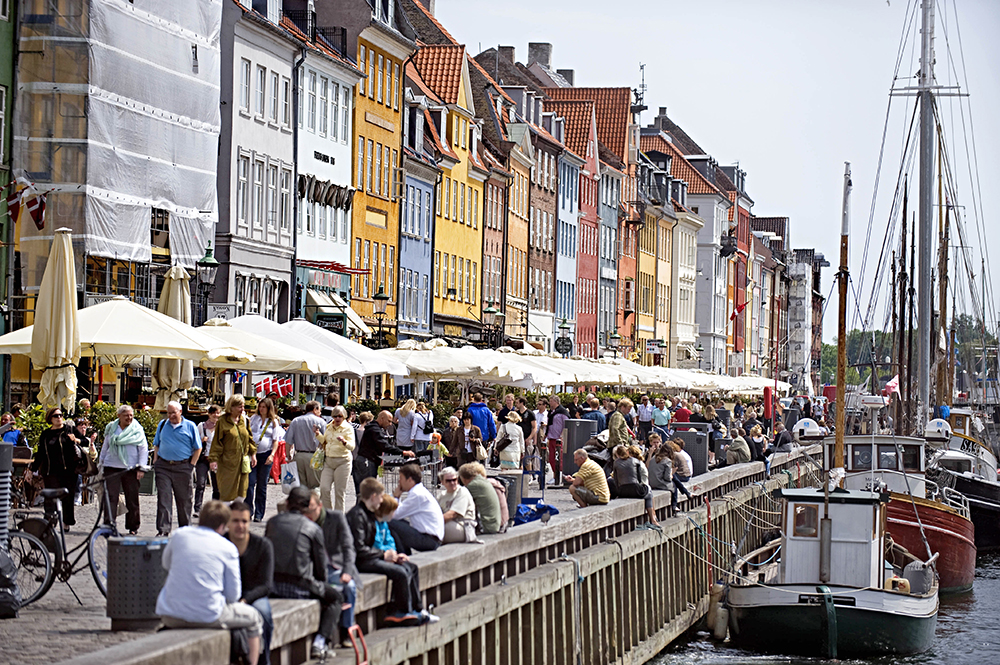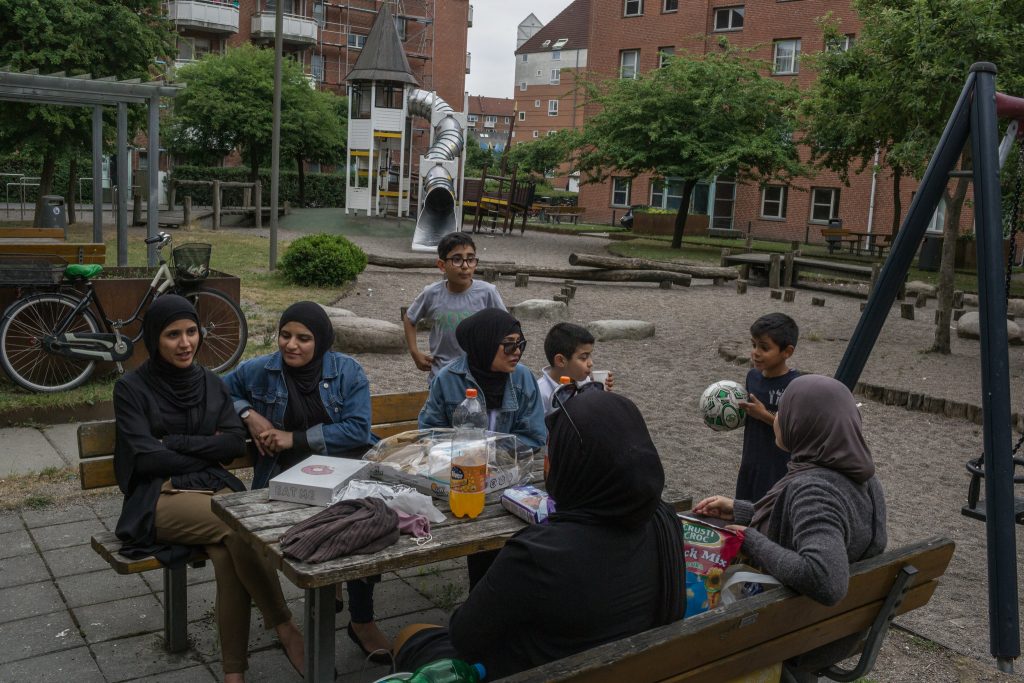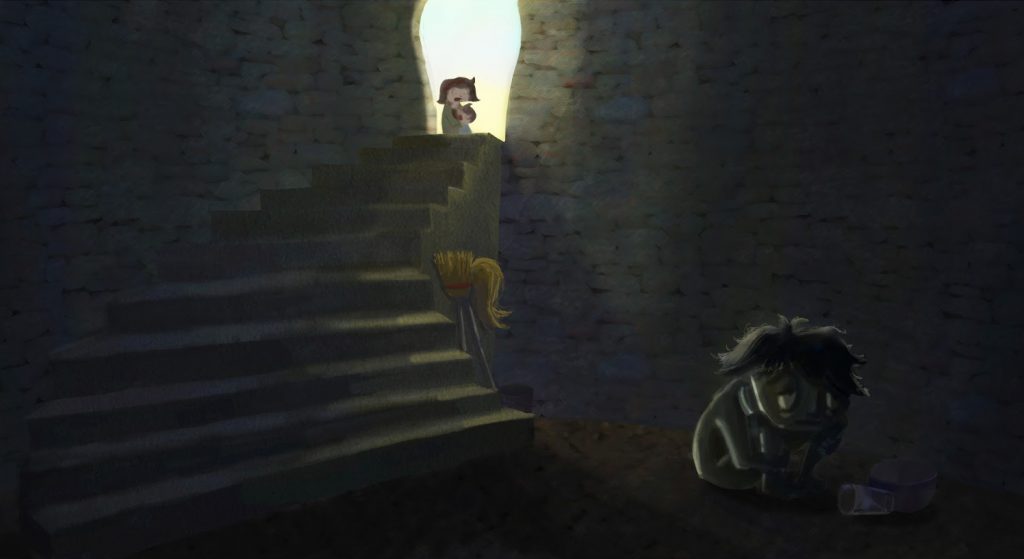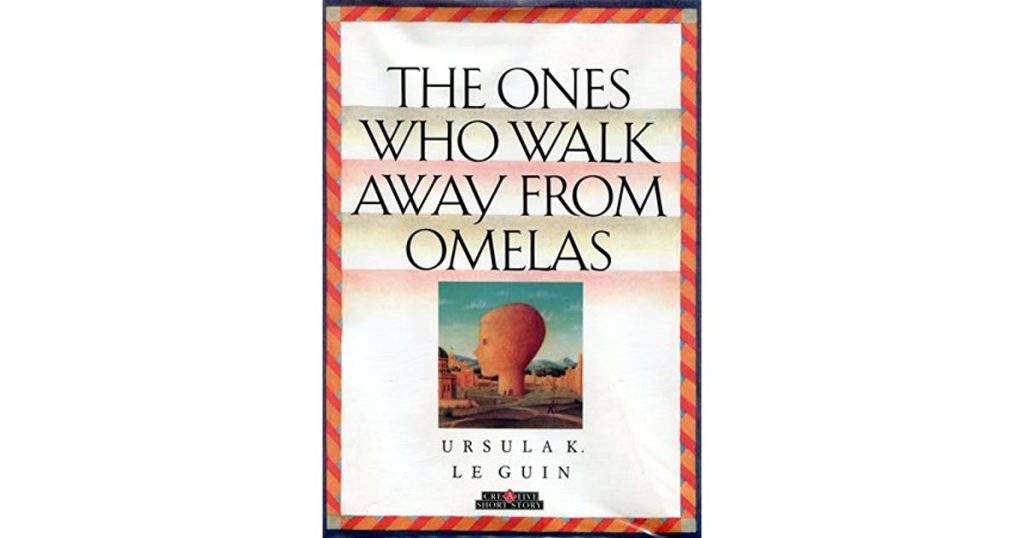Denmark’s “anti-ghetto” laws in 2018 made the life of non-western ethnicities a misery. In 2019, Demark ranks the second happiest country in the world, stepping up from third place in 2018.1 Is Demark becoming the utopian city of Omelas?2

photo: Nyhan in Copenhagen (source)

(source: Mauricio Lima for The New York Times)

(Illustration by Michello Santoso)
“Ghettos” in Denmark
In Danish authorities, the term ‘ghettos’ is an official term. For about ten years, Denmark has defined “ghetto areas” by five factors. For the ghetto residents, special regulations apply. The criteria of ghetto include income, unemployment, crime rates, education levels, and family background. If a district fulfills at least three of these five criteria, the district is labeled “ghetto”. The system ‘formally’ applies these criteria for all Danish people. However, in reality, the laws and criteria target non-western immigrants.
Surprisingly, the criterion of family background explicitly uses the phrase ‘non-Western countries’. It measures whether the share of immigrants and their descendants from non-Western countries is higher than 50%. For the education levels, it counts only those educated in the Danish systems. Thus, an immigrant with a doctoral degree in Iraq will be counted as an under-educated resident, unless
‘Anti-Ghetto’ Laws in Denmark: In 2018, the Laws got harsher for non-Western immigrants
In 2018, 25 ghettos were listed up. Denmark is the only western democratic country to mark out official “ghettos” and to apply different rules to the residents. In Danish newspapers, the phrases of “ghetto parent” and “ghetto child” appear. Having such official ‘ghetto lists’ and ‘ghetto policy’ is already unusual and controversial. But, in 2018 the government made this ‘ghetto policy’ even harsher. The intervention in non-Western immigrants’ lives has become more extreme. The government announced the plan “One Denmark without Parallel Societies: No Ghettos in 2030“. What changes are going to happen? Some examples are as below.
- Demolishing family dwellings in the hard ghettos.3 A maximum of 40% of housing remains as a form of social housing (known in Danish as almene familieboliger – normal family housing). But there are no answers yet to the question of where these people are to live
- Starting at the age of 1, “ghetto children” must spend a minimum of 25 hours a week in state-approved Danish language childcare, for mandatory instruction in “Danish values”. The mandatory 25-hour does not include nap time. Noncompliance can result in a stoppage of welfare payments. Other Danish citizens are free to choose whether to enroll children in preschool up to the age of six
- Residents who have received integration allowance or other allowances for six months are not allowed to move into hard ghettos
- Crime-convicted residents are not allowed to move into hard ghettos, and if a resident commits a crime within a 1 km radius of their residence, they are evicted from the residence
- Extra jail time for “ghetto” residents when they are convicted of a crime
- Harsher sentences for crimes committed inside the ghetto areas
- (under consideration) Immigrant parents are not allowed to force their children to have extended visits to their country of origin. Noncompliance results in a four-year prison sentence on immigrant parents
- (under consideration) Local authorities can increase their monitoring and surveillance of “ghetto” families.
(sources: Gunvor Christensen, The Guardian, The Local.dk in March 2018, The Local.dk in November 2018)
*Note: For in-depth stories and feelings of immigrants about this change, and the problems they will face, there are many good news and opinion articles. Some articles worth reading: In Denmark, Harsh New Laws for Immigrant ‘Ghettos’, Stigmatised, marginalised: life inside Denmark’s official
Happy and prosperous country of Demark, and Omelas
Denmark is one of the happiest countries in the world. On the other hand, with the anti-ghetto laws and ‘ghetto list’ system, the country has put non-Western ethnicities into an unhappy and unfair situation, while the country needs immigrants
Omelas is an imaginary utopian city in the fiction “The Ones Who Walk Away from Omelas” (Ursula K. Le Guin, 1973). It is a city of unbelievable happiness and delight. The prosperity of Omelas can, however, sustain only when there is the perpetual misery of a single unfortunate child kept in filth and darkness. Citizens of Omelas know of its existence but stay mute on this matter.
“They all know it is there, all the people of Omelas. Some of them have come to see it, others are content merely to know it is there. They all know that it has to be there. Some of them understand why, and some do not, but they all understand that their happiness, the beauty of their city, the tenderness of their friendships, the health of their children, the wisdom of their scholars, the skill of their makers, even the abundance of their harvest and the kindly weathers of their skies, depend wholly on this child’s abominable misery.”
Ursula K. Le Guin, The Ones Who Walk Away from Omelas

Demark took back the 2nd place in the World Happiness Report. But can we say the Danish society progressed?
On 20 March, The World Happiness Report 2019 was published. Denmark ranked the second happiest country in the world. The country was in third place in 2018 (score 7.555) and is now celebrating its increased rank (score 7.600). Denmark is well known for having a good welfare system. Not only its GDP level is high, but also the level of access to education and health care is high, and of public corruption is low. Some articles point out “hygge” as one of the most important reasons (such as a post by Marie Helweg-Larsen). “Hygge”, Danes’ unique cultural value, means a feeling of cozy contentment. Its value has an implication of high-quality ‘social interactions’.
If we look at the happiness rank, Denmark has achieved social progress. But, its inclusiveness and the sense of equity and justice seem to have declined. It also casts doubt on whether ‘happiness’ can tell much about the progress of a country. For instance, Singapore ranked as the 34th happiest country in 2019. Its rank has dropped from the 26th place in 2017. On the other hand, it is the country of inclusive multiracialism. It has comprehensive and proactive policy measures to engineer multi-racialism and harmony in society. In recent years, the government has even set racial requirements for its presidential election. It is to reserve the presidential post for a particular racial group – Chinese, Malay, Indian or others – if that group has not occupied the presidential office for five consecutive terms or the equivalent of up to 30 years.
- The 2019 happiness rank is based on data of the previous year. Thus, it shows the level of happiness in 2018.
- Omelas is an imaginary utopian city in the fiction “The Ones Who Walk Away from Omelas” (Ursula K. Le Guin, 1973). It is a city of unbelievable happiness and delight. However, this utopian state of Omelas requires the perpetual misery of a single unfortunate child kept in filth and darkness
- A neighbourhood is a hard ghetto if it has been on the ghetto list for the past 5 years. 16 hard ghettos (about 50,000 residents) are listed in 2018